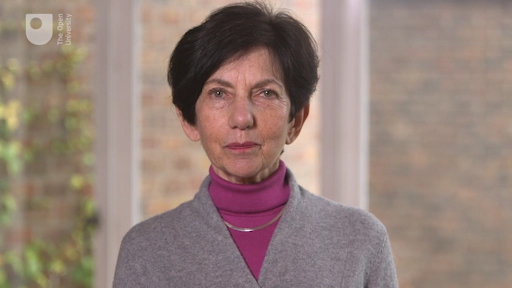Week 2: What is autism like?
Introduction
By now you should begin to have a fair picture of autism. This week looks in more detail at key characteristics, giving particular attention to difficulties and challenges, and also to strengths, and to how these may vary between individuals and groups.
Now watch the video in which Dr Ilona Roth introduces this week’s work.
Download this video clip.Video player: boc_aut_1_video_week2_intro.mp4


Transcript
ILONA ROTH:
This week, you're going to look at autism in more detail. You'll learn about the traits, ways of behaving and interacting with the world, which are characteristic of autism. These include social traits, affecting the way autistic people interact and communicate with other people, and nonsocial traits, such as being unusually attached to routines and familiar things in life. Also characteristic are unusual sensitivity to sounds, smells, or other sensory qualities.
Some of these traits can make life very challenging for autistic people. For instance, an autistic child with very few words is likely to experience great frustration at the difficulty of communicating with others. An adult with heightened sensitivity to bright lights may feel unable to do apparently simple things like going shopping. But what you will discover is that some of the traits that make for difficulties can also be a source of particular strengths and skills. In fact, a small proportion of people on the autism spectrum have exceptional talents and fields like art or music.
I hope you'll enjoy the artistic works featured this week. I find the range and quality of this work, often by self-taught artists, just stunning. Remember though, that not everyone with autism has special gifts. And some are contending with accompanying problems like epilepsy or depression. In fact, you'll be struck by how very varied autism can be. That's why it's considered a spectrum. Personal accounts, and you'll encounter several this week, give hugely helpful insights into both challenges that autistic people share and their individual experiences. Do engage with these accounts and enjoy the week ahead.
Interactive feature not available in single page view (see it in standard view).
By the end of this week you should be able to:
- formulate a more detailed picture of autism characteristics and the challenges they may pose for the individual and their family
- have insights into autistic strengths, including special skills and outstanding talents
- appreciate ways in which the profile of difficulties and strengths varies between different individuals
- understand that the autism spectrum encompasses striking IQ differences between individuals
- recognise the presence of accompanying problems such as epilepsy or dyslexia in some cases.
